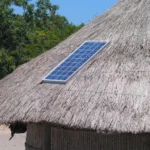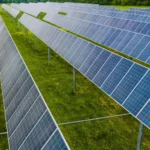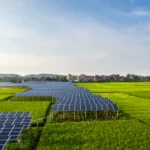How Azimuth Angle Impacts Solar Panel Efficiency for Homes, Industries, and Commercial Buildings
How Azimuth Angle Impacts Solar Panel Efficiency for Homes, Industries, and Commercial Buildings
Designing layout for a solar installation is an expert job and needs to be done with utmost care. There are two important considerations while designing solar panels installation , one is inclination of the panels and another is direction. The angle of tilt should be latitude of the place wherever the installation is being done to optimize the radiation of solar and direction should be true south.
While angle of tilt is easy to control ,the direction is not always possible to be maintained. If the building roof on which solar panels are to be installed is such that structure installation is not possible in true south direction then there is bound to be loss of generation. We have seen a lot of installations where because of paucity of space and ignorance of installer and client the solar plants are installed without giving a thought to tilt & direction and only aesthetic considerations are valued . This way though the client can be impressed but the very purpose of installing solar plant to generate rated power is compromised.
In case it is necessary then also the installer should try and reduce the impact of azimuth . To have a clear picture of loss of generation the following table may be used.
Suggested Articles

Solar Energy Myths vs. Facts: What You Should Know
Solar power myths often mislead homeowners. Learn the facts about cost, efficiency, and reliability of solar energy.

Solar Industry Faces Growing Losses from Underperforming Equipment
According to the Raptor Maps’ Global Solar Report, the amount of power loss due to equipment anomalies has nearly doubled from 1.61% in 2019 to 3.13% in 2022. This trend is expected to continue, with anomaly-driven power loss potentially growing to almost 6% by 2025.

Poor vs Good Solar Installation: Key Differences Explained
A solar system’s performance depends heavily on installation quality. This blog explains the clear differences between a poor and good solar installation — from wiring practices and panel alignment to mounting structures and system safety — helping you make an informed choice and ensure long-term efficiency.

Industrial Solar Plants with Diesel Generator Backup: What You Need to Know
Discover how industries can efficiently run rooftop solar plants alongside diesel generators (DG). Learn the benefits, setup tips, and hybrid system strategies to ensure uninterrupted power and maximize energy savings.

6 Upcoming Renewable Energy Events in India You Should Attend
The World Environment Expo, 2022 is a business platform that allows national and international equipment

Everything You Need to Know About Net Metering
Discover everything about net metering – how it works, benefits, installation process, and how it helps you save on electricity bills.

AVANCIS Pushes CIGS Thin-Film Solar Modules Beyond 20% Efficiency
AVANCIS achieves a breakthrough in solar technology, pushing CIGS thin-film modules beyond 20% efficiency for higher performance and energy output.

Solar Inverters India: How to Choose the Best for Your Solar System
India’s solar market offers a wide range of inverters, making selection challenging. This guide explains key factors to consider, helping users choose the right inverter for residential, commercial, and industrial solar projects effectively.